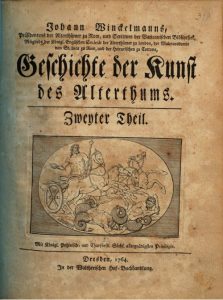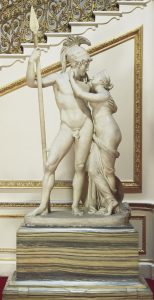Longing for what we have lost 2.1

Winckelmann’s rebirthing of antiquity
Winckelmann and the revival of antiquity
Even during his lifetime Winckelmann revolutionised conceptions of antiquity and the way people studied it. Winckelmann’s passion reignited a yearning for the ancient past that spread beyond the Italian lands. The Victorian aesthetic critic Walter Pater writes of Winckelmann’s work:

Its purpose was direct, an appeal from the artificial classicism of the day to the study of the antique.[1]
His most famous and detailed work, History of the Art of Antiquity (Geschichte der Kunst des Alterthums) prompted a renewed interest in Greek and Roman sculpture. Numerous new editions and translations into French and Italian appeared before the end of the eighteenth century.
Winckelmann’s influence is also visible in the diffusion of neoclassical art across nations, as exemplified in the paintings of Jacques-Louis David, the sculptures of Antonio Canova, and the architecture of Karl Friedrich Schinkel.
[1] Pater 1873, 158
→ 2.2. ‘Father of art history’
